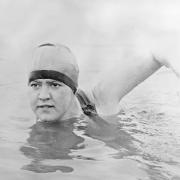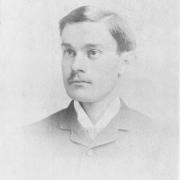When sick postal workers couldn't afford treatment, let alone time off, they faced a bleak future. One worker, though, looked to find a solution to the problem, founding in the process what went on to become one of Kent's best-known small private hospitals. Stephen Roberts tells Charles Garland's story
At the turn of the 20th century there was a UK healthcare crisis. Almost 300,000 people suffered from tuberculosis but fewer than ten per cent - 22,000 - received treatment. Sanitoria were fashionable for treating consumptive ailments, however, their ‘fresh air cure’ was often found in resorts that were financially out of reach for most. There was a particular problem in the postal service, where up to 45 per cent of sorting clerks and telegraphists were dying from TB. Why so many? It was cramped, dusty conditions that permitted this highly infectious disease to flourish. Fortunately for its workers, one of their own, telegraphist clerk Charles Garland, thought something must be done. His solution was to create a Mutual Society, where workers paid weekly contributions to cover healthcare costs for any falling ill.

The National Association for the Establishment and Maintenance of Sanitoria was a consortium founded by trade unions and friendly societies. A sanatorium was an establishment for treating those convalescing or suffering from a chronic illness - and TB was certainly one of those. In 1905, Charles Henry James Garland was to prove instrumental in the founding of The Post Office Branch of the National Association - and this nearly 50 years before the foundation of the revolutionary NHS. The Post Office and Civil Service Sanitoria duly became a member of the Association and would eventually become the Benenden Healthcare Society. As names of institutions go, its moniker from 1905 was, although certainly solid and trustworthy, less than catchy. Unsurprisingly, it has been subject to a few changes of nomenclature since then. Nowadays, the hospital it founded in Kent on Cranbrook's outskirts, is known rather more succinctly as Benenden Hospital, and has developed to offer expert care across a wide range of services.
Garland believed in the maxim ‘prevention is better than cure’ and knew that treating greater numbers of ill people was key, especially if the means existed to enable them to stay off work until cured, a 'luxury' usually denied to working-class people, for whom there was immense pressure to resume earning. The idea of an insurance scheme developed in Garland’s mind for around a decade before it saw fruit; it took time to persuade others to join him. Garland was ahead in recognising that a healthier workforce meant a healthier business. It was 1903 when he first published his draft proposals that foresaw contributions from 30,000 staff of 2s per annum; enough to treat 120 people per year and build a contingency fund. Garland’s motivation was philanthropic: ‘To save perhaps 50 lives a year, to keep sorrow from 50 homes, to bring hope and renewed joy to 50 families! The very thought is inspiring’.

Garland worked closely with a Dr Thomas Lister (not to be confused with the more famous Dr Joseph Lister (1827-1912), the surgeon and antiseptic pioneer) and together they defined the sanitorium that they planned to build as an institution where patients with consumption would be treated without drugs, via a practical approach that involved a return to nature. They needed a building, of course, so 250 acres at Cleveland Farm in Kent were purchased for £5,800. The land is close to the old Wealden village of Benenden, mentioned in the Domesday Book along with its ancient church, St George’s, and village green. A one-time industrial centre for the cloth trade, it was also home to watermills (the hospital developed on the site of two), and had a school that became a military hospital during WW2. Not only was there a working farm there was plenty of surrounding countryside too, considered to be ideal in the fight against TB. A circular was sent to 100,000 postal workers in May 1905 telling them about the scheme and the response was enthusiastic; suddenly workers could access healthcare previously denied them. By the November Garland had his 30,000 members and then some. Time was vital so the National Sanitorium at Kent Hospital began rising from the ground in July 1906, its foundation stone laid by Queen Victoria’s daughter, Princess Christian of Schleswig-Holstein - a stone still prominent at the hospital.
The first patients arrived at the hospital’s West Wing on March 4 1907. The sanitorium had 196 beds, and doors and windows left wide open regardless of the weather, because fresh air was considered vital to recovery. Visitors were discouraged as it was believed they would impede the patient’s recovery, which was paramount. Garland certainly backed this approach: ‘There may be some sentimental reason why a patient should not be completely cut off from his friends, but these are far outweighed by the very large benefits due to the undisturbed and quiet life which results’. It was agreed with the Post Office that patients would receive sick leave while at Benenden Hospital, though they had to have been Society members for twelve months to receive treatment. The Society paid travel expenses to and from the hospital.

A recruitment drive was first held in 1909, with a series of lectures held in Post Office premises to attract more members. A new building was opened at the hospital in 1910, the Post Office Pavilion, with guest of honour the Right Hon. Herbert Samuel, the Postmaster General. Medically, results were immediate; come 1913, 506 of 565 patients had been cured or improved. Patients were encouraged to exercise and work to regain fitness. As Garland himself put it: ‘The exercise given … has a specific effect in promoting the cure of the disease’ and ‘if the patient is not carefully trained towards work-fitness, the three or four months ‘loafing’ in the institution is likely to leave him ‘soft’, flabby and unfit to resume the work by which he gains his living’. Our Charles told it how it was. ‘Grade work’ ranged from simply being allowed out of bed to working on the hospital farm, which supplied veg, milk and eggs.
In July 1912 Charles Garland resigned as Society Secretary when he was appointed to the National Health Commission, set up to administer the National Health Insurance Act, a precursor to the NHS that was coming, albeit not for another 36 years. As cases of TB declined the Society diversified its treatment to include chest complaints and cancer, building an operating theatre, surgical wards and an x-ray department.
Today, the Society, now known as Benenden Health, is a UK not-for-profit mutual society providing private medical cover for a membership of 800,000 individuals plus employees of corporate schemes. Benenden Hospital remains a thriving independent flagship hospital for the Society and underwent a multi-million-pound redevelopment in 2017. It proudly continues Garland’s principle of providing first-class treatment - now for a wider range of specialities such as orthopaedics, cosmetic surgery, ophthalmology and gynaecology.





























